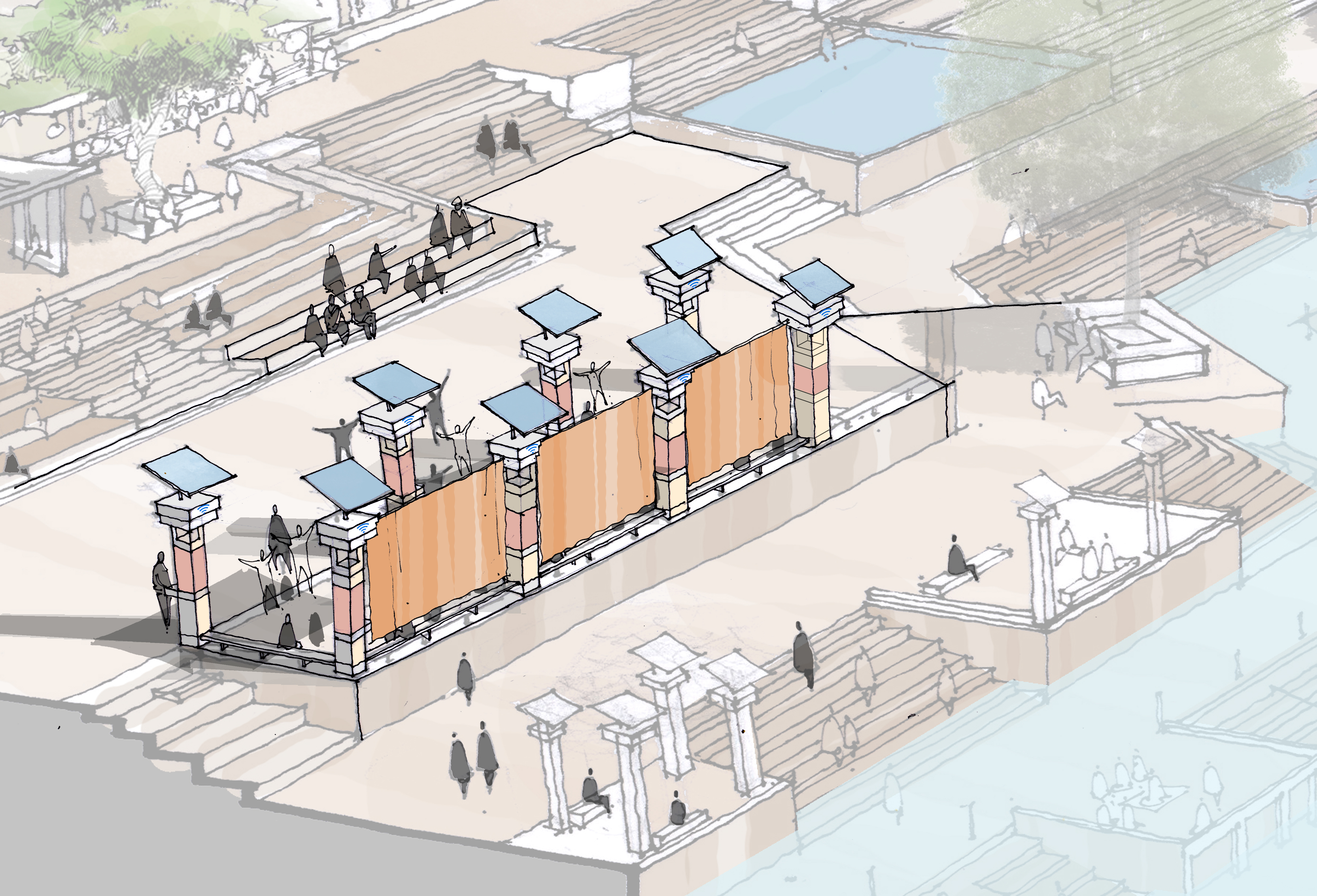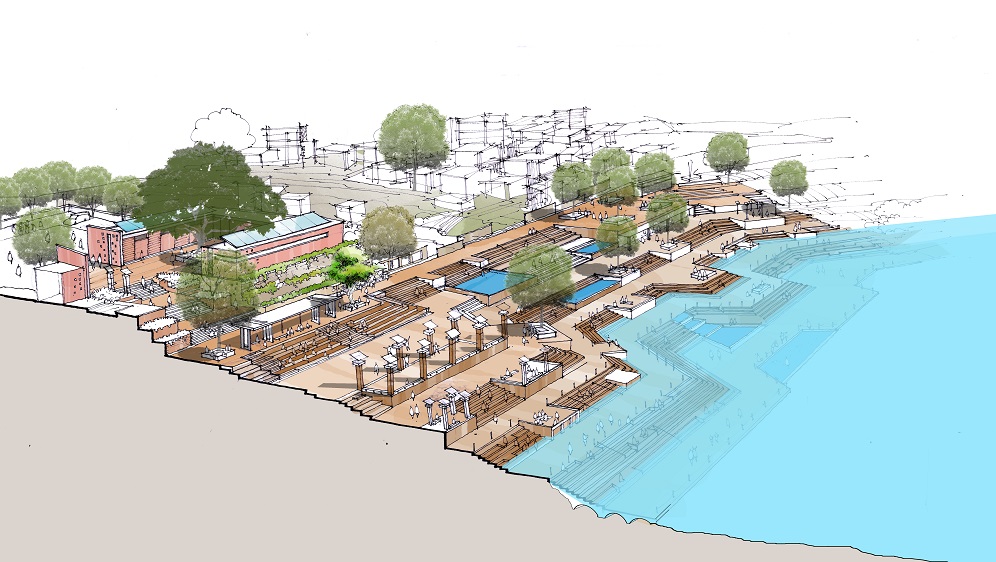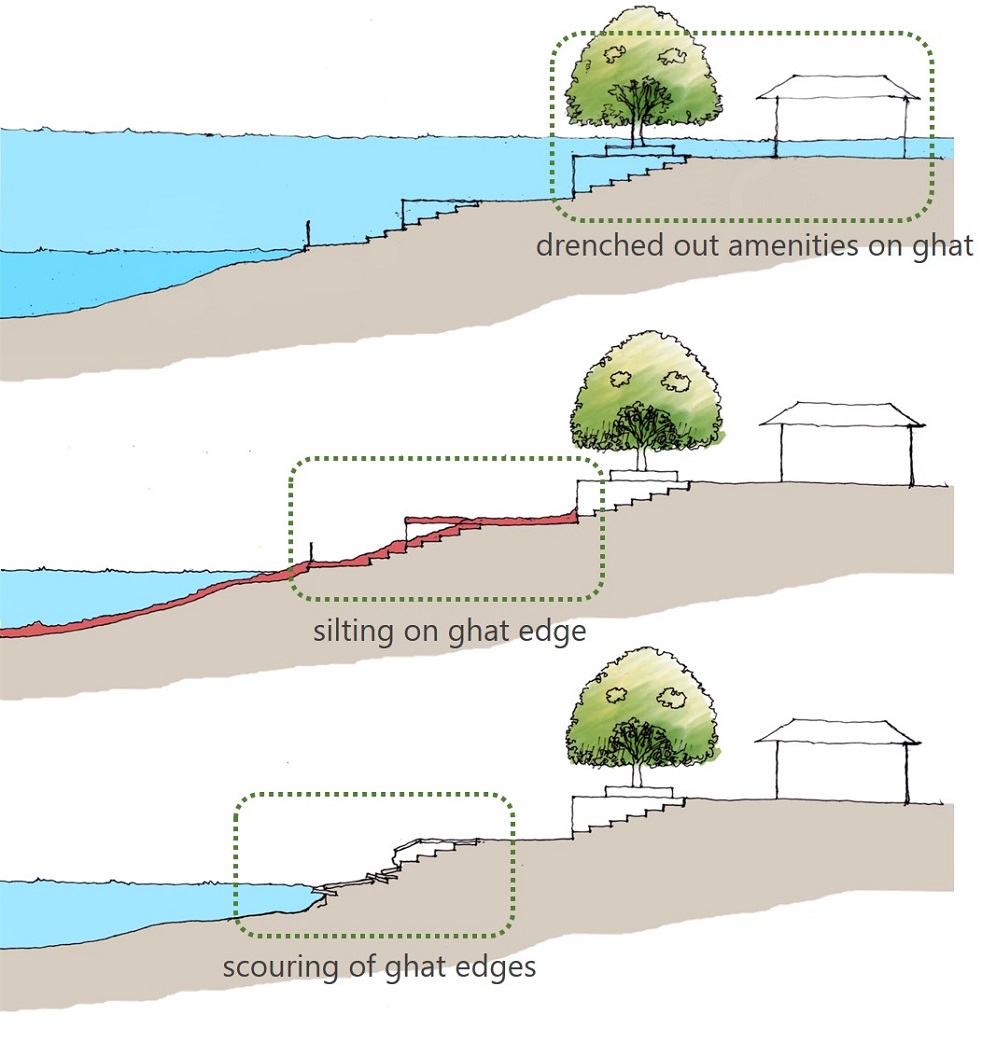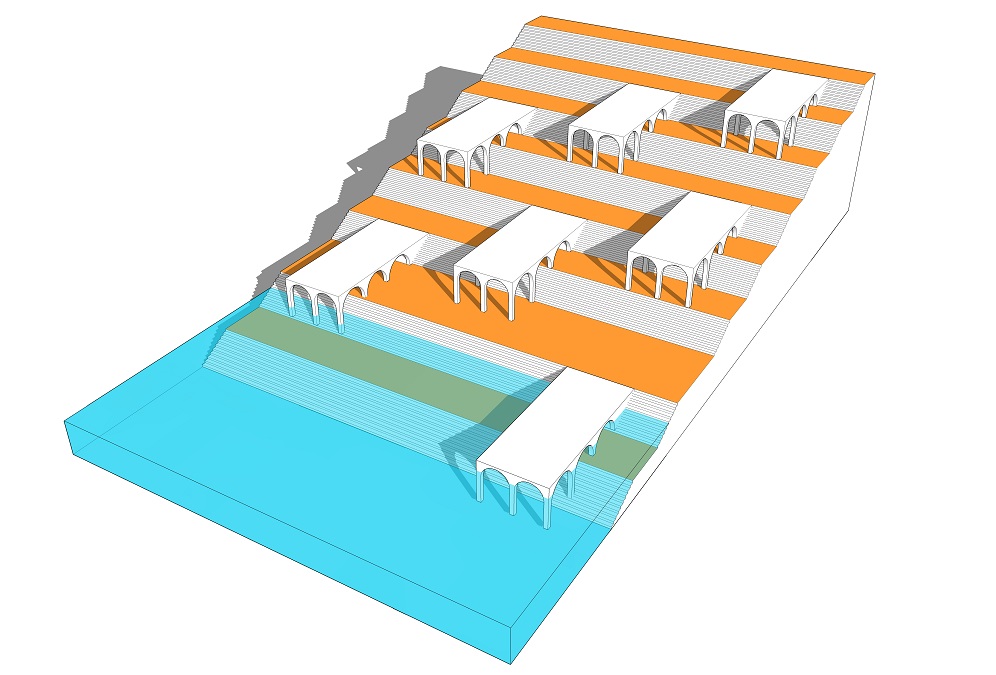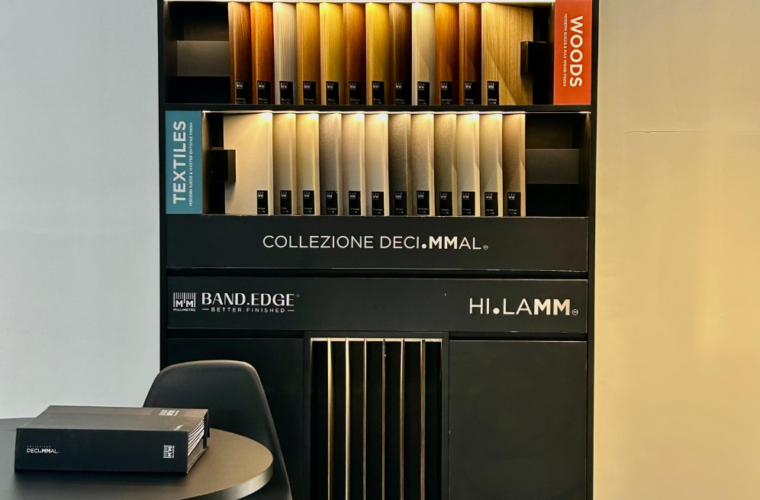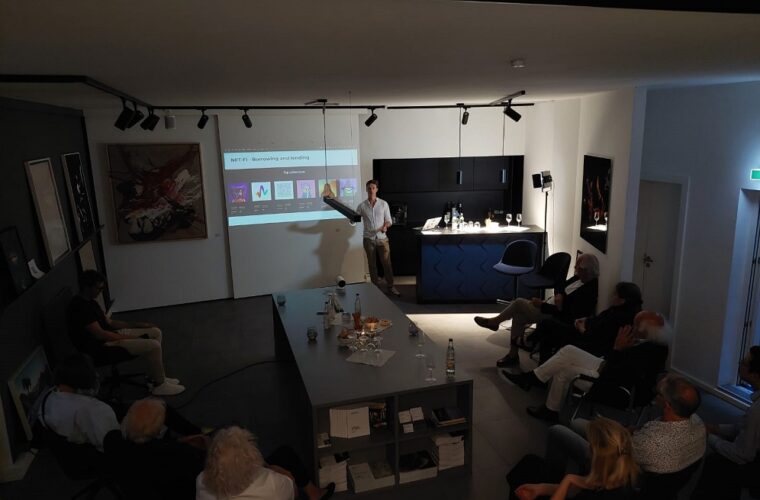Delhi firm working on Ganga’s Ghats
Morphogenesis, Delhi is rejuvenating the 64 Ghats along the River Ganga in an environmentally and culturally sustainable way. The architects proposed an urban intervention scheme at Allahabad and Varanasi for the sustainable restoration of the Ghats. The Ghats are a flight of steps leading down to the river, which stabilize the river edge and provide an interface for human and water engagement. The prime design concern has been dealing with the erosion of the riverbank. This is addressed by applying vernacular methods to treat the water’s edge.
An in-depth analysis and study of each ghat revealed a greater need for space for urban interaction, community building and public engagement. The provision of ritual tanks and other urban design elements – platforms for discourse, platforms for cremation – were proposed. The Ghats were designed to serve a traditional, ritualistic purpose and now also function as urban spaces for discourse and dissemination of knowledge. Chaupals (seating under the shade of trees) have been reintroduced as shade canopies for social activity. Smart Ghat columns provide additional framework for increasing shaded area besides fulfilling essential functions of providing drinking water, internet connectivity and solar power stations.
The design of the spaces allows rituals to be performed using the water in a controlled way, thus introducing the potential for cleaning the polluting elements. Locally available porous materials are used for construction. Almost all structures are proposed to be made of brick which is low maintenance and self-cleaning with the weather. Ventilation has been taken care of, with all structures lifted, as ideal for the hot climate. Solar panels form most of the lifted roofs and enable greater energy efficiency. Piers capable of sustaining water transport up and down the river have been designed. The crematoria and actual pyres have been designed so as to reduce the amount of wood required by to 30 per cent.
The design approach not only brings back the glory of the past but also creates potential for the future that sustains the Ganges’ intrinsic importance in the lives of future generations.
.


